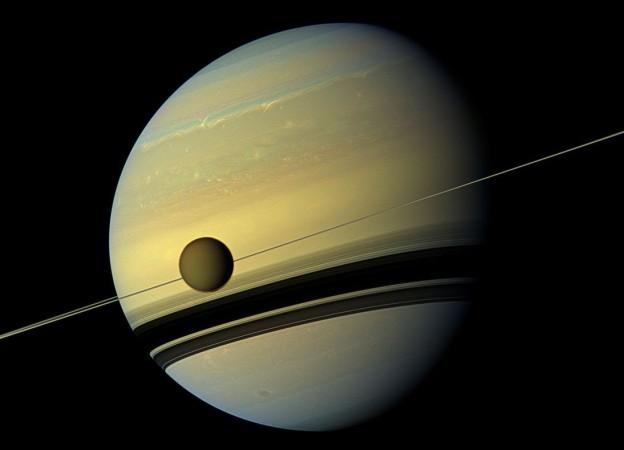
NASA's Cassini spacecraft orbited Saturn, studying the ringed planet and its moons in detail, before ending its mission on Sept. 15, 2017. The space agency, which managed to garner significant details about the sixth and the second-largest planet in the Solar System during Cassini's tenure, is now working on another ambitious project that will require more sophisticated equipment for the purpose.
NASA has been planning to send a real submarine into the seas of Titan, the largest of Saturn's many moons, in the next 20 years. To make it possible, the federal space agency is collaborating with Washington State University researchers to build an outer space submarine, and determine how it might work on the icy world of Titan.
Titan, frequently described as a planet-like moon, is 50 percent larger than Earth's Moon. It is also said to be the only natural satellite to have a dense atmosphere, and the only object in space other than Earth where evidence of surface liquid has been found.
The Titan submarine, which is still being designed by NASA, will be operating autonomously. It is expected to study Titan's atmospheric and ocean conditions while moving around sea beds and hovering at or below the surface. But one particular issue is making the engineering of the submarine extremely challenging: Titan's freezing hydrocarbon seas.
Existence of liquid on its surface makes Titan very similar to Earth. Unlike anywhere else in the Solar System discovered so far, Titan's surface not only includes oceans, rivers and clouds, it also rains there like it does on our planet.
But, instead of water, Titan's hydrological cycle is based on methane. That's enough to make all the difference.

According to researchers, building a submarine that can dive into Titan's bizarre oceans is tricky because the temperature there can drop to as low as minus 300 degree Fahrenheit (minus 184 degree Celsius), and the concentration of ethane and methane can vary dramatically, changing the liquid's density properties.
The researchers, therefore, re-created a Titan ocean in a laboratory to understand how the heat produced by the submarine would affect its hydrodynamic characteristics. They have published a paper on their work in the journal Fluid Phase Equilibria.
As part of the study, the researchers built a test chamber that housed the liquid mixture at very cold temperatures to simulate the seas of Titan. They also added a two-inch, cylinder-shaped cartridge heater that would approximate the heat that a real submarine would create.
The researchers also said that if a heat-producing submarine gets into the very cold Titan liquid, it will form nitrogen bubbles, too many of whom can make it difficult for the submarine to maneuver and collect data.
Researchers also engineered a special video camera and an optical device called a borescope that could withstand the low temperatures and high pressures to visualize what was going on within the test chamber.

















